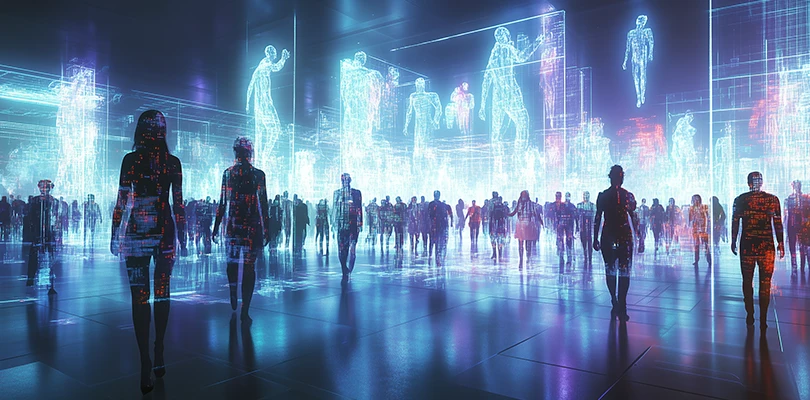The Term NPC (Non-Player Character) in the Gaming World: Its History, Evolution, and Future

The development of video games continues to accelerate as technology advances daily. One of the most crucial elements enriching the storyline and offering diverse interaction options for players is NPCs (Non-Player Characters), which are characters not controlled by the player. This article explores the origins and evolution of the NPC concept, from its inception to its transformation through artificial intelligence.
-
The Meaning, Origin, and Brief History of the Term NPC
What is an NPC? A Non-Player Character is a character in the gaming world not controlled by the player but playing essential roles in the game's storyline and mechanics. These characters can engage in dialogue with the player, offer quests, or participate in challenges. They help create an AI-driven game world where players can interact with the environment.
Origin of the Term The term "NPC" originated from tabletop role-playing games (RPGs). In these games, the game master controls characters outside the player group, and the digital adaptation in video games draws inspiration from this tradition.
Brief History
-
1970s-80s: Simple NPCs appeared in text-based adventure games, responding to basic commands.
-
1990s: Graphical advancements introduced NPCs with clearer roles, such as merchants and guides.
-
2000s and Beyond: Enhanced processing power allowed NPCs to display more complex behaviors.
-
Early AI and Behavioral Models of NPCs
Early NPC AI capabilities were quite limited:
-
Basic Commands: NPCs operated with a few predefined behavior commands. For example, a patrolling enemy NPC would follow a specific route and attack when encountering the player.
-
Conditional Responses: They responded to specific triggers using basic if-else logic.
These early models were designed primarily to support core gameplay mechanics.
-
Evolution of NPC AI
As technology progressed, so did NPC AI:
-
Expanded Behavior Sets: Modern NPCs can patrol multiple routes, interact with their surroundings, and communicate with other NPCs.
-
Emotion and Expression: Facial expressions and voice acting have enhanced cinematic storytelling.
-
Adaptive Behavior: NPCs can now react dynamically to player styles and choices.
Advanced game engines like Unity and Unreal Engine have facilitated these improvements.
-
NPC AI Management in Sandbox Games
NPC AI in open-world (sandbox) games is more complex:
-
Traffic and Path Management: Simulating pedestrian and vehicle behavior requires complex algorithms.
-
Random Events: NPC reactions to player actions like causing accidents or damage.
-
Data Management: Optimization techniques are used to manage thousands of NPCs simultaneously.
-
NPC AI in RPG Games
Key aspects of NPCs in RPGs include:
-
Dialogue Trees: Branching dialogue options based on player choices.
-
Quest Systems: NPCs often serve as quest givers in RPGs.
-
Reputation and Character Development: NPC reactions can change based on the player's choices.
-
The Future of NPCs with Large Language Models (LLM)
Today, Large Language Models (LLMs) enable more realistic and dynamic NPC interactions:
-
Dynamic Dialogue Generation: NPCs can generate context-specific responses without relying on pre-scripted dialogues.
-
Natural Language Understanding: NPCs can respond more human-like to player inputs.
-
Personalized Experiences: NPCs can adapt to individual player behavior and preferences.
-
Challenges and Ethical Considerations
-
Content Filtering: Ensuring NPC dialogues remain appropriate and ethically sound.
-
Risk of Incorrect Content: Large models risk generating inaccurate or inappropriate responses.
Conclusion
NPCs are fundamental to enriching the atmosphere of video games. Evolving from basic command-driven characters to deeply interactive agents, NPCs continue to advance with LLM technology. The future promises even more personalized and realistic gaming experiences driven by these AI advancements.
Notification!




